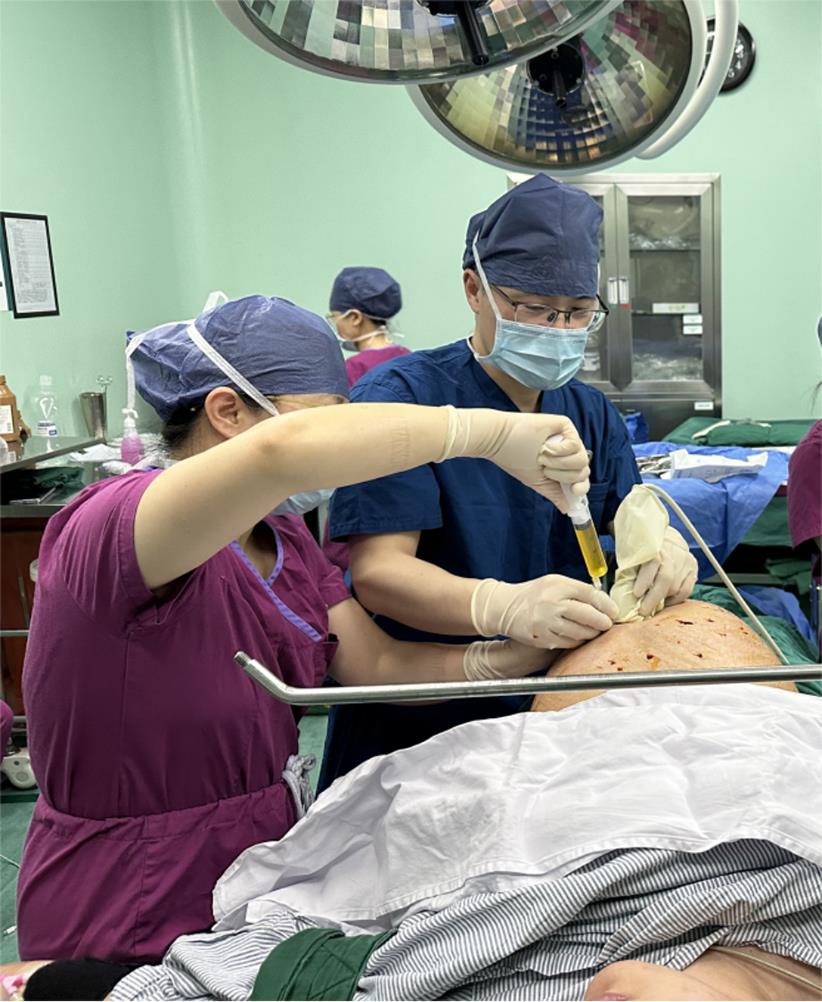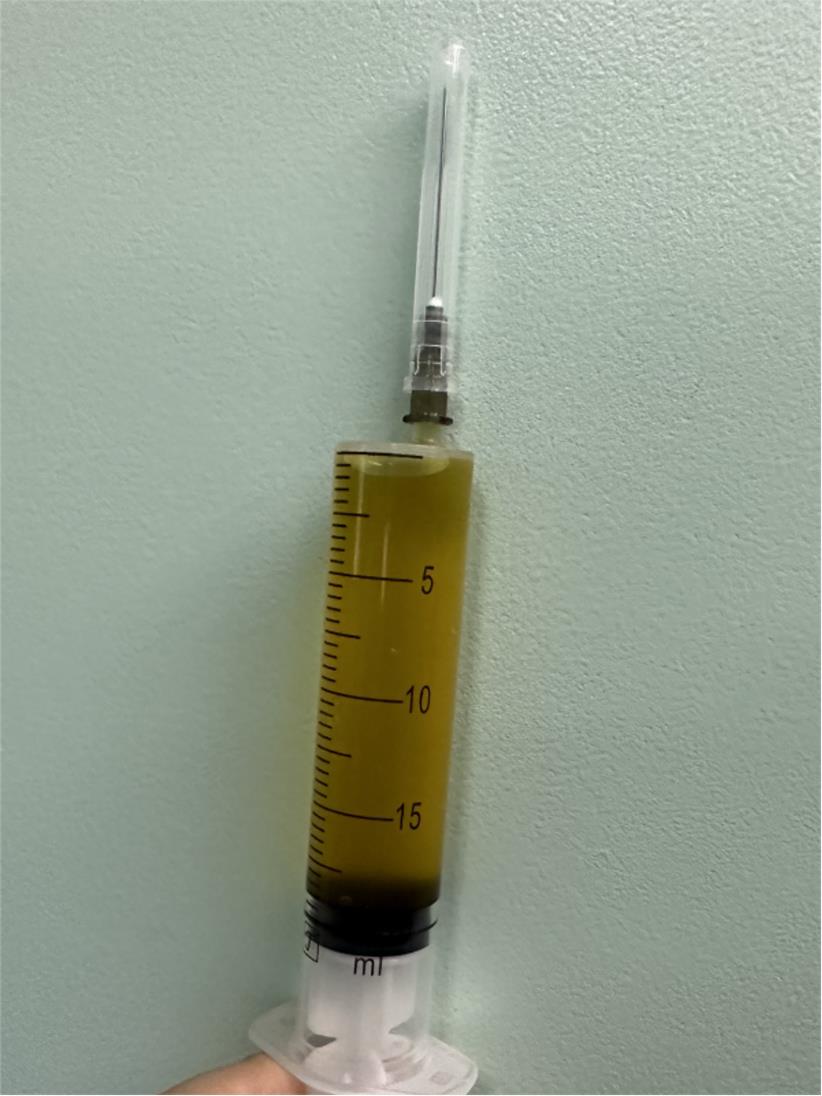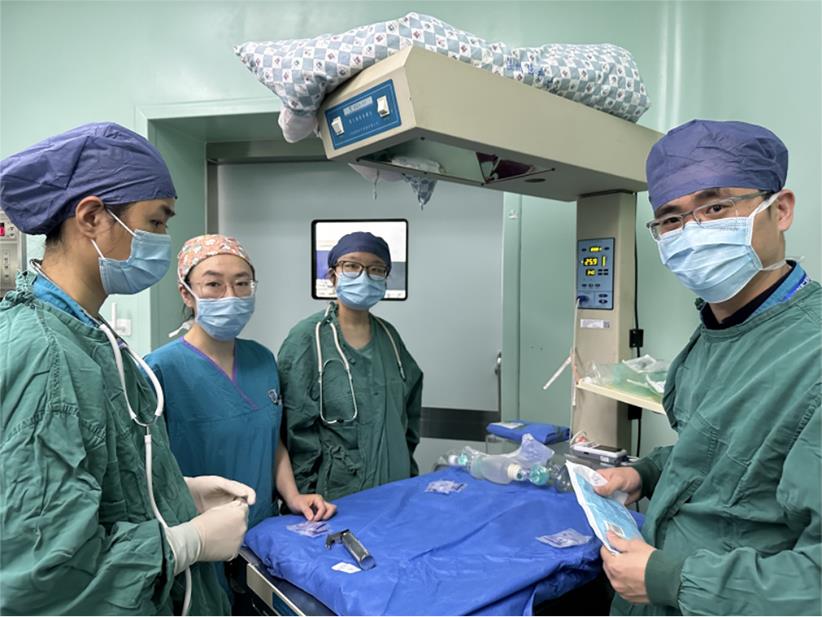Recently, in the delivery room of the Obstetrics Department at the Second Affiliated and Yuying Children’s Hospital of WMU, we gathered forces from departments of neonatology, obstetrics, pediatric surgery, and anesthesia to jointly rescue and deliver a "special" baby with congenital chylothorax named Xiaobao (pseudonym).
Before birth, Xiaobao developed a large amount of bilateral pleural effusion and excessive amniotic fluid. The rapid increase in fetal pleural effusion further worsened the condition. In this case, after delivery of the fetus, it would seriously hinder lung expansion, affect the establishment of spontaneous breathing, resulting in hypoxia asphyxia, and even unable to survive and other risks. Ms. Zhu, the expectant mother, choked up for a while when she heard the doctor's assessment.
In response to Ms. Zhu's situation, our hospital immediately initiated a multidisciplinary perinatal consultation (MDT) to discuss and formulate a treatment plan. When everything was ready, the cesarean section was scheduled for March 17. On that day, obstetricians, neonatologists, and anesthesiologists from our hospital gathered in the operating room to officially start the life-saving relay race.
Surgery in the uterus
Before the cesarean section, Wang Rongyue, deputy chief obstetrician, performed the right pleural effusion puncture and drainage of the fetus under B-ultrasound guidance. This is a technically challenging operation, where the doctor carefully observes the movement of Xiaobao in the uterus under B-ultrasound, punctures the abdomen of the pregnant woman with a long thin needle, reaches the chest cavity of the fetus through the amniotic sac, and drains 110 ml of yellowish pleural effusion during the operation.


A total of 110 ml of pleural effusion was withdrawn.
After the operation, Xie Ailan, director of the Obstetrics Department, performed the cesarean section for the mother. As soon as Xiaobao was delivered, Zhu Jianghu, deputy director of the Department of Neonatology, immediately underwent endotracheal intubation to establish a respiratory pathway, and bilateral thoracic puncture drained the remaining pleural fluid to promote lung dilation. The child's vital signs were stable throughout the process, and breathing was established soon after birth, avoiding hypoxia asphyxia. This is a relay for life, from the pregnant woman to the fetus, from intrauterine to extrauterine, all processes must be seamlessly connected, urgent but not chaotic, and there is no room for mistakes.

The newborn rescue team is ready before delivery.
The "life and death barrier" has been passed one after another in the greenhouse.
However, as a premature baby of 34 weeks + 6 days, Xiaobao has not yet passed the dangerous period, and the continuous pleural fluid needs continuous closed chest drainage. At the same time, the function of each organ is immature, and it still needs to be closely monitored and carefully treated. Xiaobao was transferred to the neonatal ward for further diagnosis and treatment. After testing for pleural effusion, it was finally diagnosed as neonatal congenital chylothorax.
"Neonatal chylothorax is mainly due to the leakage of lymph fluid from the thoracic duct or lymphatic vessels into the chest cavity and forms pleural effusion, which can cause dyspnea, suffocation, and other symptoms. In severe cases, malnutrition and immunocompromise can also occur, leading to secondary infection. Because the lymph is chyle-like, it is named “chylothorax”, a rare disease in the neonatal period, with an incidence of about 1 in 100,000 and a fatality rate of 20%-50%. Mai Jingyun, deputy director of the Department of Neonatology, introduced.
The Department of Neonatology has formulated a meticulous and strict individualized diagnosis and treatment plan for Xiaobao. Through respiratory support, closed thoracic drainage care, enteral and parenteral nutrition support, somatostatin therapy, intrapleural erythromycin injection treatment, and the unremitting efforts of medical staff, Xiaobao's vital signs have gradually stabilized. During the 40 days in the hospital, Xiaobao has been improving and improving every day: he has withdrawn from the ventilator, removed the umbilical vein catheter, removed the transperipheral central venous catheter, and removed the chest closed drainage tube. He has overcome each difficulty. On April 26, Xiaobao successfully recovered and was discharged from the hospital, transforming from a "swollen" baby to a real "strong" baby, weighing nearly 9 pounds when released, and all indicators were normal. This was the best "gift" for Ms. Zhu's family.
(Author| Department of Neonatology Lin Su; Editor| Publicity and United Front Work Department Luan Chenxi; Translator| International Exchange and Cooperation Department L. Zhu)
Science Communication Time
Neonatal chylothorax has a history of polyhydramnios and severe asphyxia at birth. Clinical symptoms often occur within 24 hours after birth, including shortness of breath, dyspnea, cyanosis and other respiratory distress, and pleural effusion. Premature infants are often accompanied by local or systemic edema such as the scalp, neck, limbs, and chest wall, and some children have ascites, pericardial effusion, and other manifestations. Early intrauterine diagnosis and treatment are essential. If treatment is not timely, infection, thrombosis, malnutrition, electrolyte imbalance, and immunodeficiency are likely to occur, and some children are accompanied by pulmonary hypoplasia. Treatment is mainly respiratory support, pleural fluid drainage, and nutritional support, with limited use of octreotide and the emergence of new treatment methods.
Department Introduction
Founded in 1988, the Department of Neonatology of our hospital is a supporting discipline for perinatal neonatal medicine, a provincial rescue and transfer center, a director unit of the National Neonatal Specialist Medical Alliance of the Chinese Medical Doctor Association, a provincial training base for specialist nurses, a perinatal medical diagnosis and treatment center in southern Zhejiang and northern Fujian, and a master's and doctoral degree awarding point, awarded honorary titles of a national-level women's civilization post and a five-star Youth Model Unit Award in Zhejiang Province. As early as 2004, the Neonatology Department began to pay attention to rescuing premature babies. It established the "Crystal Baby" charity rescue project in 2010 and the "Yiqiai" Guardian Crystal Baby Volunteer Service Team in 2011.
After years of development, the Neonatology Department of our hospital has closely cooperated with obstetrics, pediatric surgery, neurosurgery, cardiothoracic surgery, otolaryngology, anesthesiology, and other multidisciplinary cooperation, constantly challenging to admit various complex children. It has become a referral center for critically ill newborns in southern Zhejiang. At the same time, the department has a mature transport team, which provides 24-hour life support for transporting critically ill newborns in south Zhejiang, western Zhejiang, and northern Fujian, and constantly creates miracles of life.